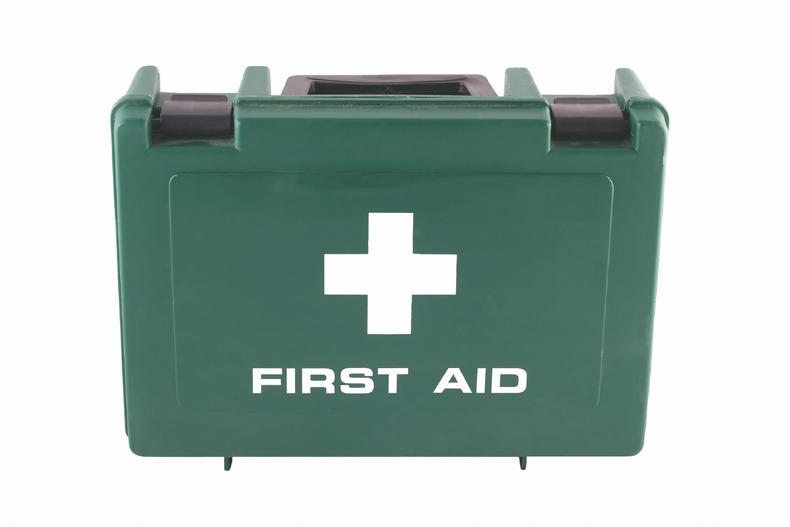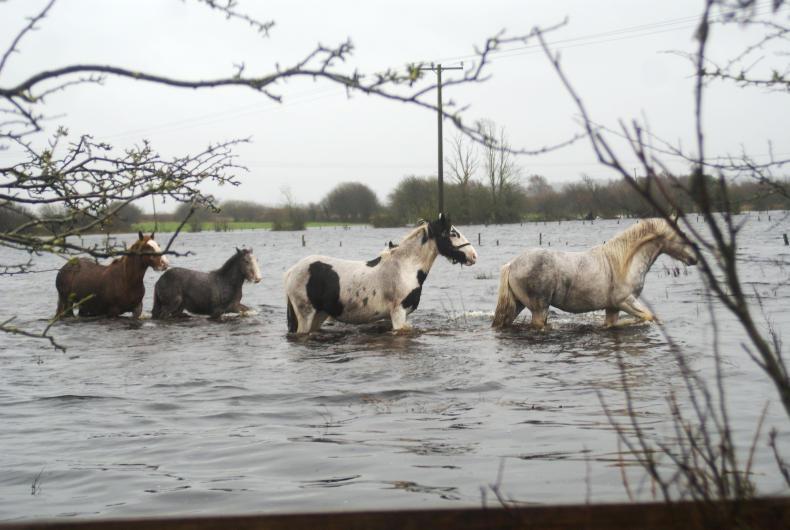ACCORDING to the latest Met Eireann weather warning (issued today, Tuesday, December 20th) on Friday, a deep Atlantic depression, which has been named Storm Barbara, will bring wet and windy weather over Ireland. There will be a risk of stormy conditions in coastal counties of Connacht and Ulster.
Here are our top tips on preparing for stormy weather conditions:
1. Designate a relocation area for your horses just in case.
2. Keep an animal first-aid kit on hand. See Liz O'Flynn's first aid check-list below.
3. Secure or move feed to keep accessible.
4. Compile a list of emergency numbers to keep on hand (local emergency department, your insurance agent and veterinarian). Phone lines might be down during severe weather, having a car charger for your mobile phone is a necessity in case power is interrupted.
5. Check the security of barn and stable roofing, windows and doors to make sure they will not blow off or blow open in strong winds.
6. A loss of electricity means no lighting in the barn and no automatic drinkers so have plenty of buckets and filled water tanks on hand.
7. Make sure everyone knows how to turn off the water, electricity, and other utilities to buildings in case of burst pipes, power outages, or fire hazards.
8. Fence off ponds or water-logged areas.
9. Temporary fencing should be kept on hand for this use as well as for repairs to downed fencing.
10. If a frozen pond is in a field where horses are kept, the animals should be moved to another field or if at all possible, moved into a barn.
11. With the possibility of roads closures stockpile feed in rodent-proof containers and make sure you have plenty of hay or haylage.
12. Keep barn and stable perimeters free of equipment and debris.
13. Store and secure any items or equipment that can be blown away.
14. Move larger equipment to high ground and away from trees and buildings if possible.
15. It is essential to have a backup generator along with the knowledge of how to properly run and maintain it. Test run your generators to make sure they are in working order. Make a plan for safely storing generator fuel, and contact neighbours so you can share resources if needs be.
16. Secure pesticide and chemical storage areas in case of flooding.
17. Stay up to date with current weather forecasts by monitoring your local news station and give yourself ample time to secure your needed supplies.
A First Aid Kit should contain the following, according to veterinary surgeon, Liz O'Flynn:

> Roll of cotton wool.
> Plastic or stainless steel bowl.
> Gamgee.
> Round-ended curved scissors for trimming hair from wound edges. A point-ended scissors is inadvisable as it may stab the horse if he suddenly moves.
> A larger round-ended scissors for cutting gamgee etc, to size.
> Anti-septic such as Hibiscrub or Pevidine.
> Antiseptic spray.
> Wound lotion.
> Vaseline - useful for preventing scalding below a discharging wound.
> Non-stick dressings, e.g. Melolin, a non-stick dressing can be used directly on to the wound.
> Poultice, e.g. Animalintex or antiphlogistine.
> Disposable nappies, e.g. pampers can be used under a bandage to stop bleeding.
> Thermometer.
> Bandages and tapes including:
> Crepe bandages.
> Self-adhesive bandages, e.g. Vetrap.
> Thin felt bandage.
> Rolls of Elastoplast.
> Insulating tape.
> Set of stable bandages.
> Silage tape can be used for securing poultices.
> Roll of electrical insulating tape 2cms wide.
> Torch for inspecting wounds in poor light. A head torch can be useful as it allows the operator the use of two free hands.
> A length of strong tape or an old wide neck tie which may be used as a tourniquet if adequately wide.
> Medicines: Unless animals are under veterinary care or supervision, prescription medicines are not required nor are they permitted by law. There is usually no necessity for keeping a stock of injectable or oral medications.
> Hoof pick.
> Shoe removal kit.
> Wire cutters.
> Cutters for electric tape.
> Rope halter or head collar and lead rope.


 This is a subscriber-only article
This is a subscriber-only article
 It looks like you're browsing in private mode
It looks like you're browsing in private mode






SHARING OPTIONS: